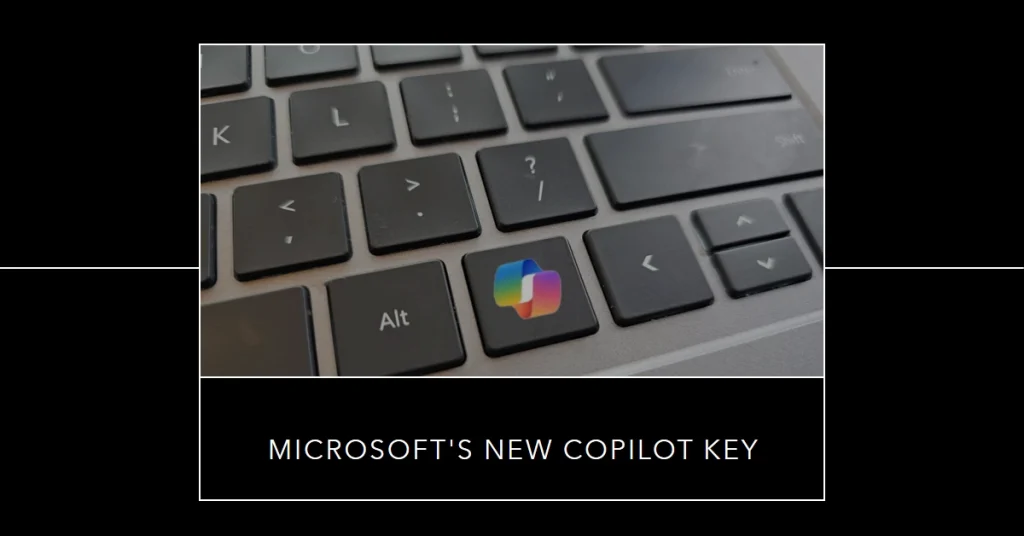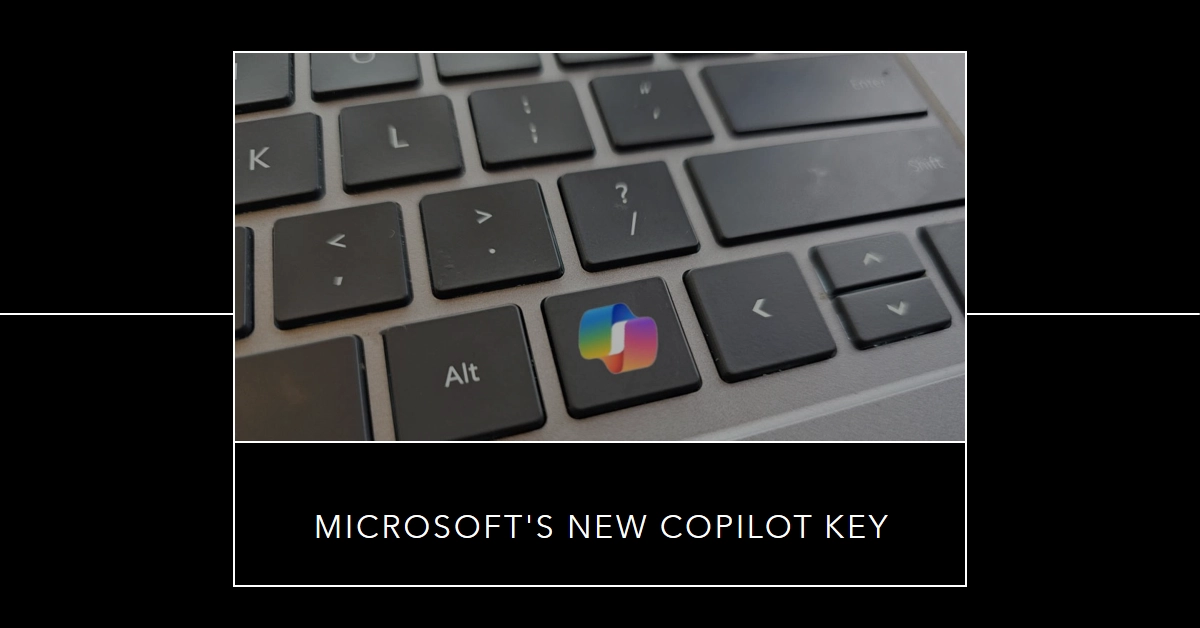For nearly three decades, the Windows keyboard layout has remained largely unchanged, a familiar landscape of keys we navigate with practiced ease. But in a bold move that signals a new era for PC interaction, Microsoft is introducing the Copilot key, the first major redesign of Windows keyboards since the 1990s. This dedicated AI button marks a significant shift in how we interact with our computers, ushering in an era of seamless integration with Microsoft’s powerful Copilot AI assistant.

Ready to reimagine your workflow? Buckle up, as we delve into the exciting world of the Copilot key, exploring its features, functionalities, and potential impact on the future of computing.
Unveiling the Copilot Key: A Portal to AI-Powered Productivity
The Copilot key, adorned with the AI assistant’s ribbon-like logo, takes its place prominently near the spacebar. On some devices, it replaces the right Ctrl key, while on others it occupies the menu key slot.
This dedicated button grants instant access to Copilot’s vast capabilities, opening up a world of possibilities at your fingertips.
Supercharging Your Workflow with Copilot’s AI Arsenal
Pressing the Copilot key instantly summons your AI companion, ready to assist you in a multitude of ways:
- Content creation: Stuck on writer’s block? Copilot can generate creative text formats like poems, code, scripts, musical pieces, emails, letters, and more. Need help brainstorming ideas? Copilot can suggest relevant keywords and topics to spark your creativity.
- Productivity boost: Automate repetitive tasks like data entry, scheduling appointments, and sending emails. Copilot can even translate languages on the fly, breaking down communication barriers and expanding your reach.
- Research and learning: Need to quickly find information on a specific topic? Copilot can scour the web, summarizing key points and presenting them in an easily digestible format. Learning a new language? Copilot can provide personalized practice exercises and real-time feedback.
- Accessibility and inclusivity: Copilot can be a powerful tool for individuals with disabilities. It can dictate text, control your computer through voice commands, and even translate sign language.
Beyond the Basics: A Glimpse into Copilot’s Future Potential
The Copilot key is merely the first step in Microsoft’s ambitious vision for AI-powered computing. Imagine a future where Copilot seamlessly integrates with your entire workflow, anticipating your needs and proactively suggesting solutions.
It could personalize your software, adjust your computer settings based on your preferences, and even learn from your habits to become an even more valuable assistant.
Adapting to the Change: A Seamless Transition for Users
The introduction of the Copilot key may raise questions about adaptability and user experience. However, Microsoft has taken steps to ensure a smooth transition:
- Contextual awareness: The Copilot key’s functionality adapts based on the active application. For instance, pressing it in a word processor might trigger content suggestions, while in a web browser it might initiate a search or translation.
- Customization options: Users can choose to disable the Copilot key altogether or customize its functionality to suit their preferences.
Embracing the Future: A New Era of Human-AI Collaboration
The Copilot key marks a significant milestone in the evolution of human-computer interaction. It represents a shift from passive interaction to proactive collaboration, where AI becomes an indispensable partner in our digital endeavors.
While concerns about privacy and potential misuse of AI remain, the Copilot key opens doors to a future where technology empowers us to achieve more than ever before.
So, are you ready to embrace the Copilot key and unlock the potential of AI-powered computing? This is just the beginning of a thrilling journey, and with each press of the Copilot key, we write a new chapter in the story of how we interact with technology.
